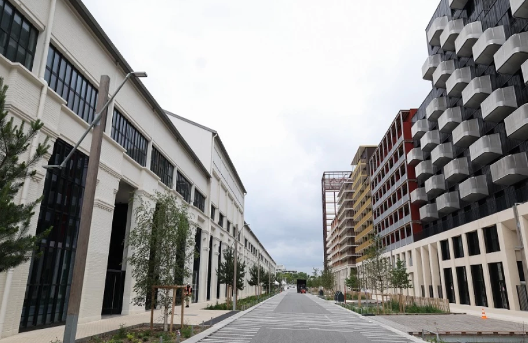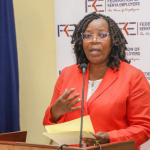The Paris Olympic village, designed without air conditioning to reduce carbon emissions, will be equipped with 2,500 temporary cooling units when athletes arrive later this month, organizers announced on Tuesday.
The complex, located in a northern suburb of Paris, was constructed as a showcase of environmentally friendly technology and features a geothermal cooling system that uses cool water pumped from deep underground.
However, the lack of air conditioning has long concerned some national Olympic teams, as athletes worry about losing sleep, especially given the recent summer heat waves in Paris. As a compromise, organizers have allowed teams to order portable air-conditioning units at their own expense, which can be installed for the duration of the Olympics from July 26 to August 11.
“The aim was to provide a very specific solution for athletes who are facing the match or competition of their lives.. and who might have requirements for their comfort and recovery which are higher than in a normal summer,” the deputy director of the village, Augustin Tran Van Chau, said Tuesday.
“Around 2,500 ACs have been ordered,” he told journalists during a visit to the village for the media.
The accommodation complex consists of 7,000 rooms, with the geothermal cooling system ensuring indoor temperatures are at least 6 degrees Celsius (11 degrees Fahrenheit) lower than outside. The approximately 40 low-rise towers will host around 10,000 Olympians, followed by 5,000 Paralympians during the Paralympic Games from August 28 to September 8.
Last year, Anne Hidalgo, the mayor of Paris and head of the Olympics infrastructure group Solideo, had ruled out the use of portable air conditioners in the village.
“I have a lot of respect for the comfort of athletes, but I think a lot more about the survival of humanity,” she told French radio France Info in February 2023.
The influential US Olympic team is known to have pushed for the provision of air-conditioning.
“We raised a lot of issues early on and they (organisers) have met those needs, like air conditioning for athletes in the village,” Rocky Harris, chief of athlete services for the United States Olympic and Paralympic Committee (USOPC), told AFP in February.
“Those things are important because of sleep and health and wellness for the athletes.”
The Paris Games is aiming to reduce its total carbon emissions to half the level of previous editions in London in 2012 and Rio de Janeiro in 2016.
As well as the “eco-friendly” village that includes low-carbon building materials, organisers are mostly relying on temporary stadiums or renovated old ones, instead of building new venues.
Only two new permanent venues will be used during the Games.
Meat products have also been reduced on menus at the village and at sports venues, with the temporary stadium hosting the skateboarding and BMXing at Place de la Concorde set to be 100-percent vegetarian.



